Amazon River Dolphins Are Facing Mass Die-Offs In Brazil
TEFÉ, Brazil — Each morning for the last several weeks, researcher Miriam Marmontel has gazed out at Lake Tefé and the Amazon River, through a thick curtain of smoke from thousands of wildfires raging throughout the region, with a sense of dread and déjà vu.
Brazil is in the grip of severe drought for the second time in as many years — this one already topping 2023 as the worst, most widespread drought in Brazil’s recorded history. Major rivers throughout the Amazon Basin have plummeted to record low levels, and water temperatures are approaching those that triggered mass die-offs of two species of endangered river dolphins this time last summer.
Advertisement
A year ago, drought drove water temperatures in Lake Tefé, in the northern Brazilian state of Amazonas, to as high as 105 degrees Fahrenheit — the upper threshold of a hot tub. By late September, the pink and gray carcasses of freshwater dolphins began washing ashore in large numbers.
“It was really horrible to see. We saw them dying in front of us,” recalled Marmontel, an aquatic mammal expert at the Tefé-based Mamirauá Institute for Sustainable Development.
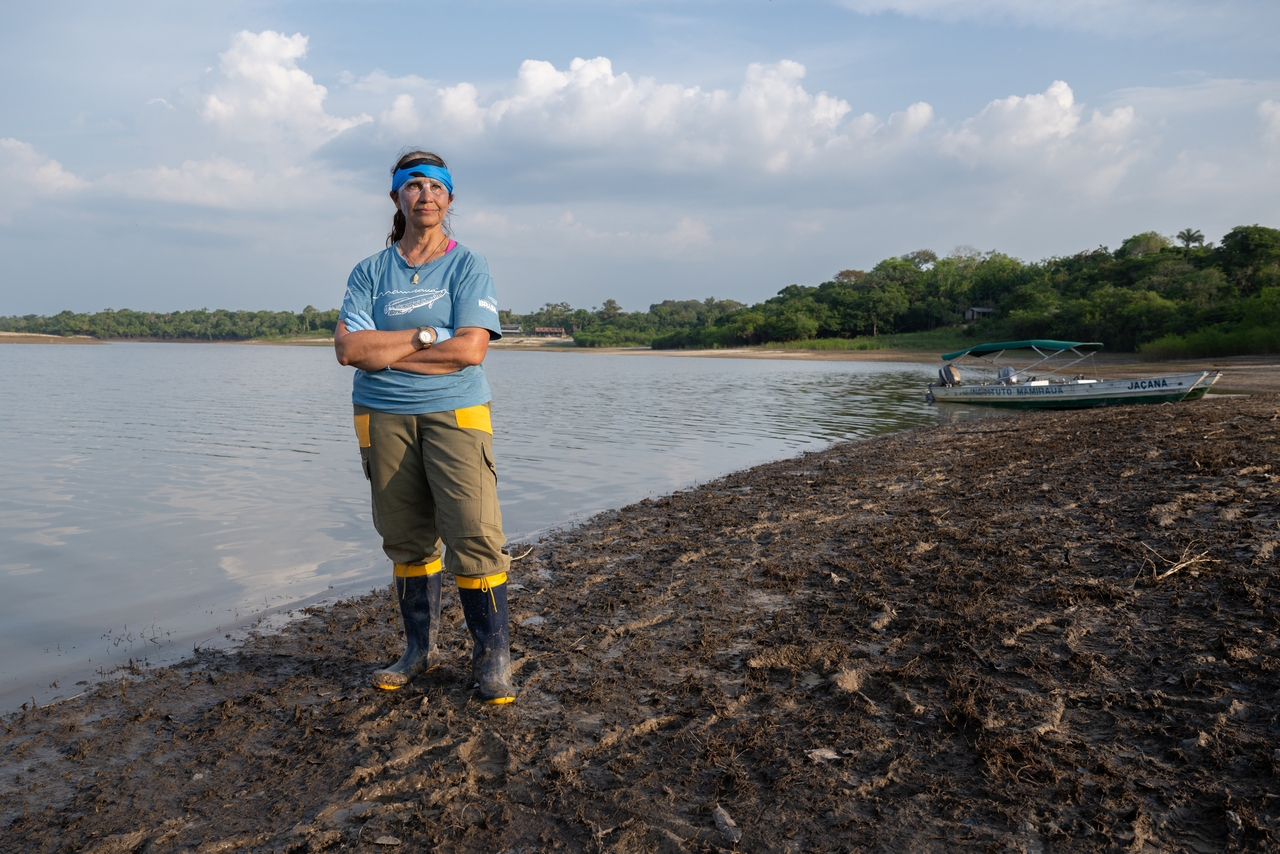
Jason Gulley for HuffPost
Now she and a team of researchers at the Mamirauá Institute are bracing for what they fear could be even more extreme and deadly conditions. Drought arrived in the Amazon a month earlier than usual this year. In Tefé, water levels have been dropping by as much as 1 foot per day, turning areas that were recently covered in water into bone-dry expanses of sand. As of Thursday, water levels on the lake were only 8 to 12 inches above last year’s record lows, according to Ayan Fleischmann, a hydrologist at the Mamirauá Institute. Upstream of Tefé, water levels on many rivers have already smashed record lows set last year.
Advertisement
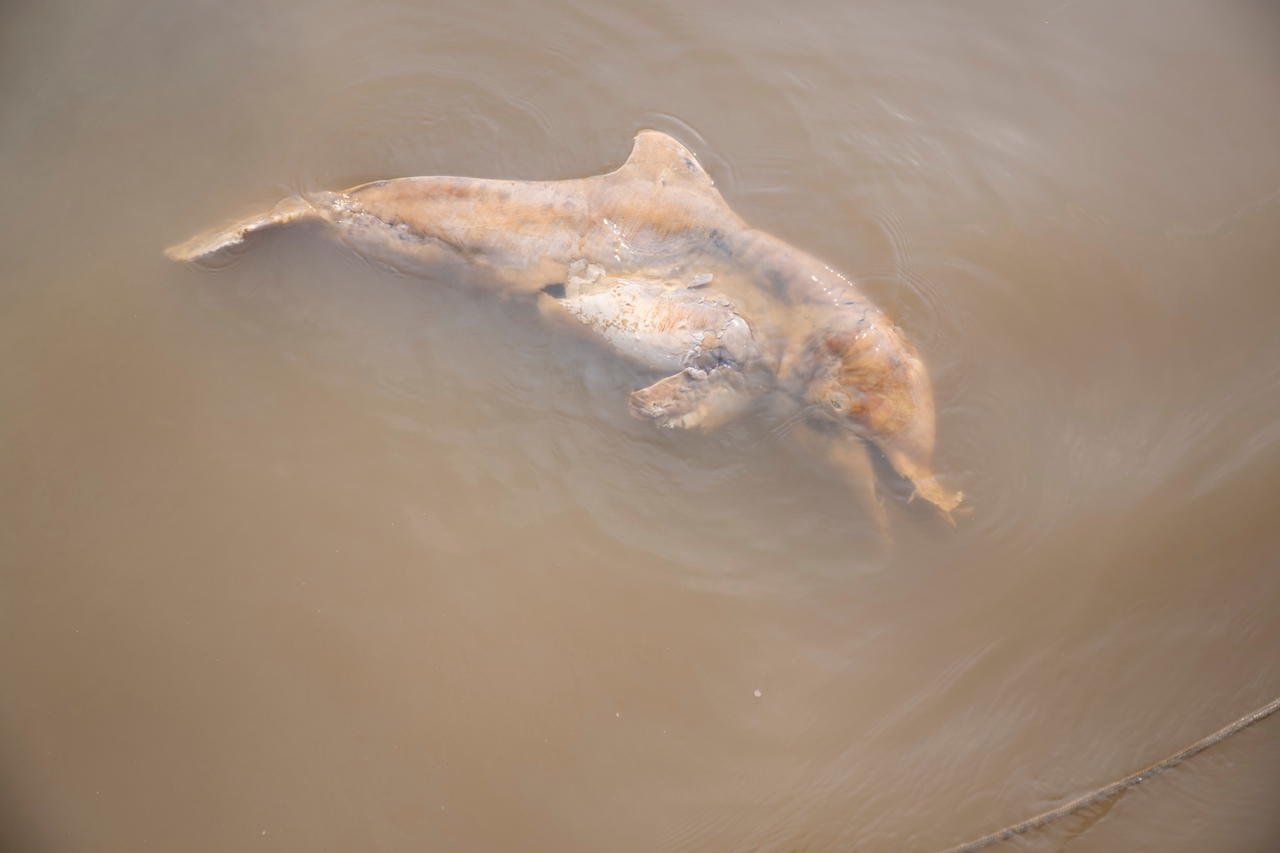
Jason Gulley for HuffPost
Earlier this week, water temperatures in Lake Tefé spiked to 98 degrees before clouds, bouts of rain and thick smoke from uncontrolled, often intentionally set wildfires moved in.
“That’s keeping the heat down a little bit,” Marmontel said of the smoke and rain. “That’s what’s saving us, I think, us and the dolphins.”
The Amazon Basin is home to two unique species of freshwater dolphins, the Amazon river dolphin, also known as the boto or pink river dolphin, and the tucuxi, a smaller, gray-bodied species. These remarkable mammals are endemic to the Amazon region, and their populations have been in severe decline due to myriad threats, including pollution, habitat loss, hunting and the mounting effects of climate change.
Marmontel and her team fear that a few straight days of intense sun is all it will take to trigger the next die-off of dolphins.
Advertisement
“I can almost see that it’s going to happen again in a matter of a few days,” Marmontel said.
Several dolphin carcasses have already turned up.
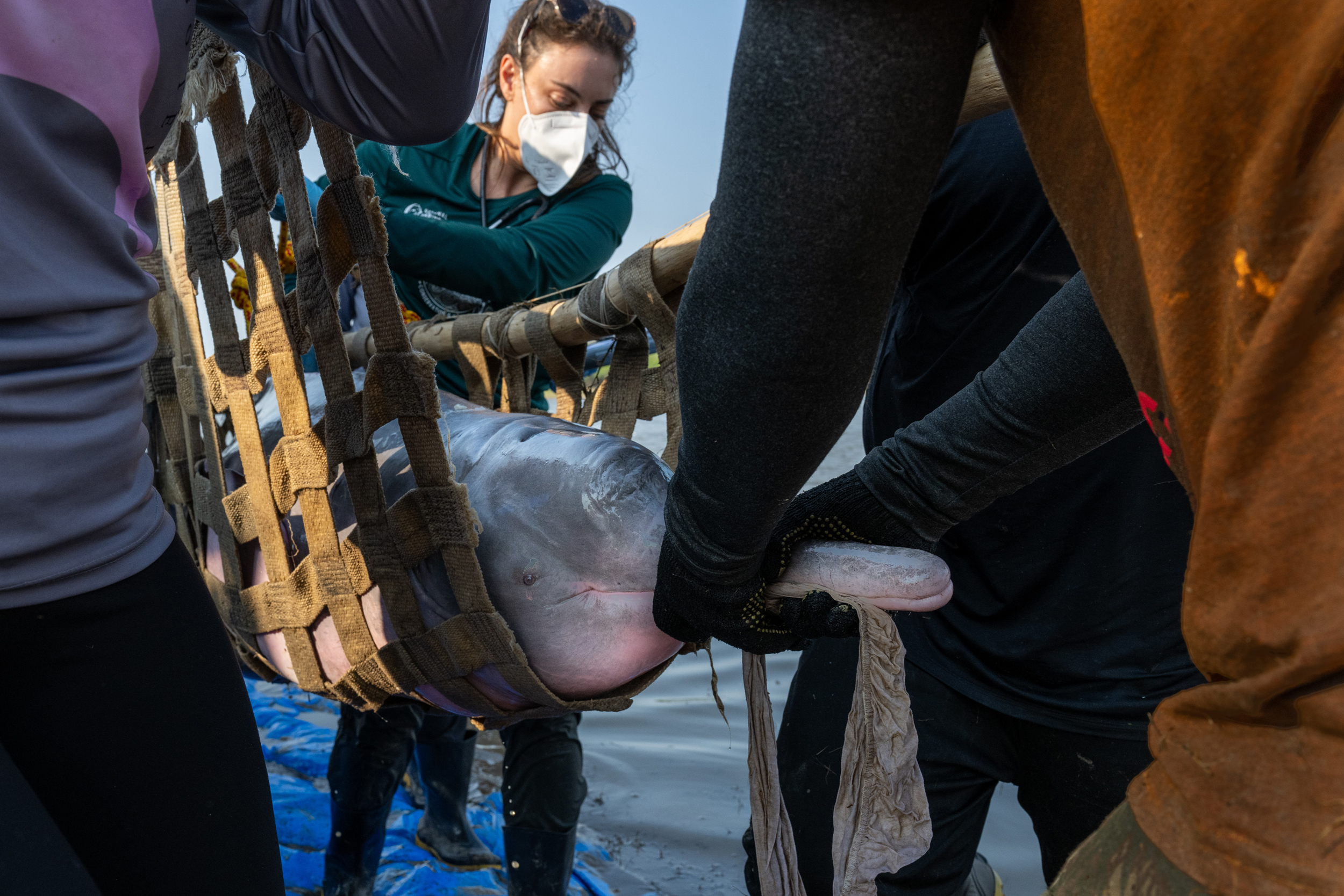
Jason Gulley for HuffPost
To better understand how climate change-fueled drought is affecting populations of freshwater dolphins in the Amazon, Marmontel and her team have been conducting in-depth health assessments. Last year, with the help of local fishermen, Marmontel successfully captured and released 20 animals in protected reserves near Tefé. Overall, the dolphins looked healthy.
But not long after she returned from that trip, her organization received reports of 19 dolphin carcasses floating or washed ashore on Lake Tefé. One or two dead animals per month is not unusual, but 19 in a single day signaled something was terribly wrong, she said. Five days later, 70 more dead dolphins were recovered.
The mass mortality event was as unexpected as it was unprecedented. Initially, biologists at the Mamirauá Institute, which led the investigation, worried the deaths might have resulted from pollution or disease. In grueling heat and wearing masks to protect themselves from unknown pathogens, they collected dozens of carcasses in various stages of decomposition and conducted thorough necropsies.
What they would later conclude is it wasn’t a contagious disease or pollution that killed the animals. Instead, researchers are confident that for the first time on record, dolphins in the Amazon died because the water they live in became too hot.
Advertisement
In the end, more than 200 endangered dolphins perished in the waters around Tefé — a loss of approximately 20% of the lake’s population of Amazon pink river dolphins and 7% of tucuxi.
An additional 120 dolphins were found dead in waters near Coari, a city about 120 miles downriver. Marmontel expects other dolphin populations throughout the Amazon also got hit, although there isn’t data on the full scale.
“I can’t believe just Tefé and Coari were blasted with this thing,” she said. One of the reasons those die-offs garnered immediate attention is because the cities are home to research institutes and universities.
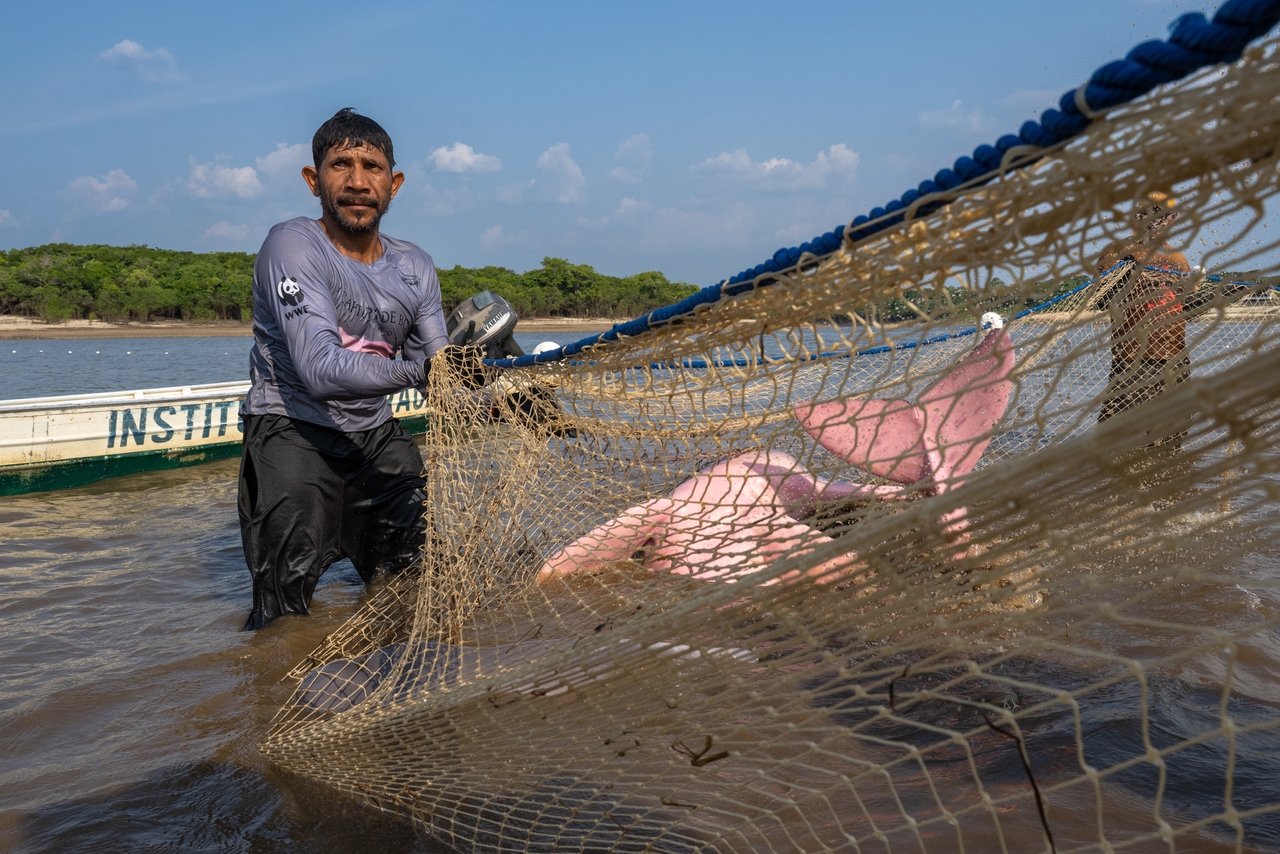
Jason Gulley for HuffPost
This year, the Mamirauá Institute wanted to conduct health assessments on another 20 dolphins, part of a much broader response that includes monitoring the depth and temperature of rivers and lakes, assessing the animals’ behavior and using acoustic recorders to detect any changes in their vocalizations, and estimating local populations.
Advertisement
The captures themselves are complex operations. Working quietly in the dark of night late last month, local fishermen hired by the Mamirauá Institute spooled a net across a tributary of Lake Tefé. Hours after sunrise, two pink bodies — a mother and juvenile male calf — finally approached the net. The fishermen moved in quickly, using another net to close the channel behind the animals and trap them. Then, working from boats and in the water, the team used a third net to create a U shape around the dolphins and slowly pull them to shore, where a small army of biologists and veterinarians was waiting.
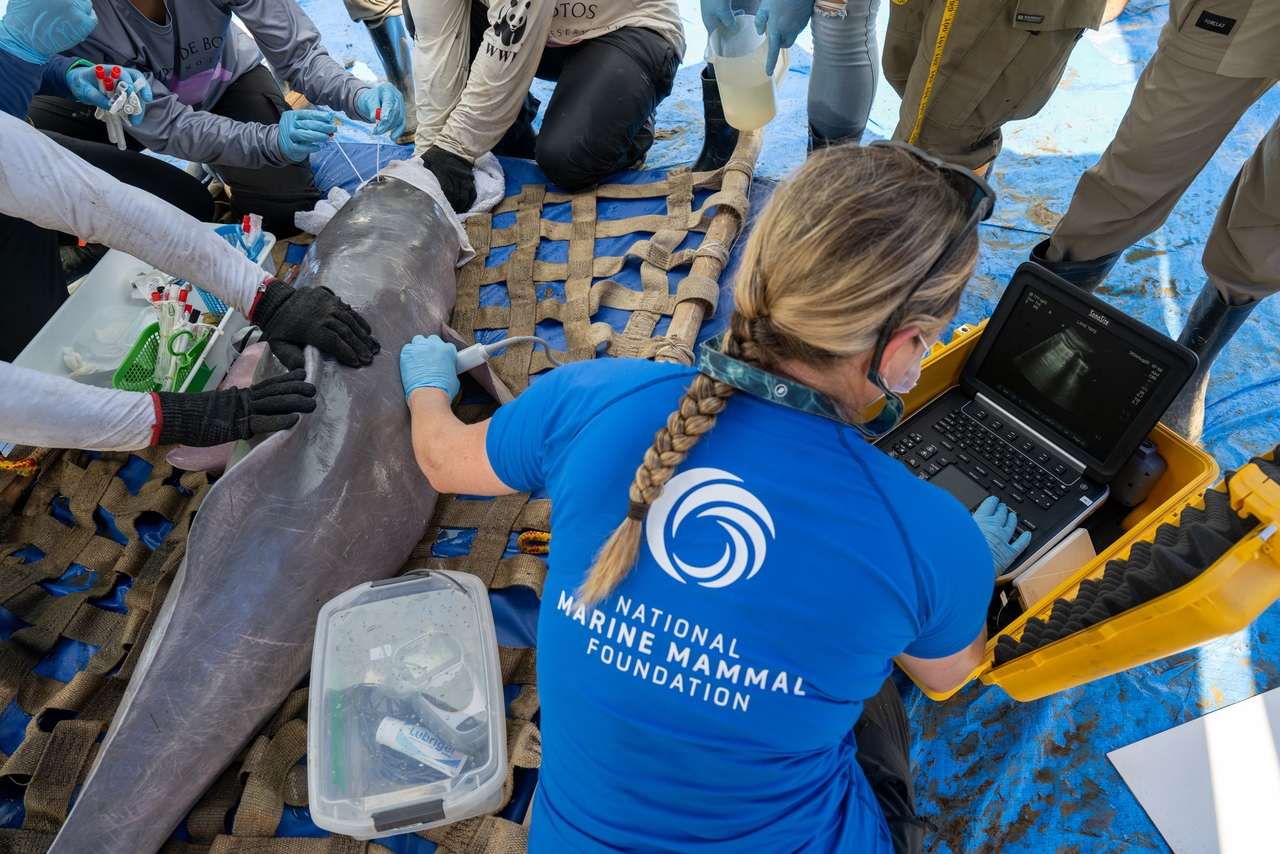
Jason Gulley for HuffPost
Once the dolphins reached shallow water, Marmontel and her team got to work. Leaving the juvenile in the water, they used a stretcher to bring the mother on shore. They bound the animal’s mouth shut with cloth and restrained it to keep it from injuring itself or any scientists. Her eyes were covered, and scientists spoke in soft whispers in an effort to keep her from becoming stressed, which could prove deadly.
The team monitored the dolphin’s breathing, body temperature and heart rate. If any vital sign became abnormal, the veterinarians would have rushed the dolphin back to the water. They swabbed her mouth, blowhole, genitals and anus for future microbial analysis. They took a blood sample from her tail, which was later tested for oxygen levels, pathogens, contaminants and parasites. An ultrasound was used to check for pregnancy and stomach contents. Biopsies were taken of any skin lesions, and the animal was put on a hanging scale to measure its weight. Scientists attached an identification tag and tracking device to the dorsal fin.
The whole ordeal lasted about 30 minutes. Throughout it, the mother chattered loudly but showed no signs of major stress. Once released, the dolphin typically recovers quickly.
Advertisement
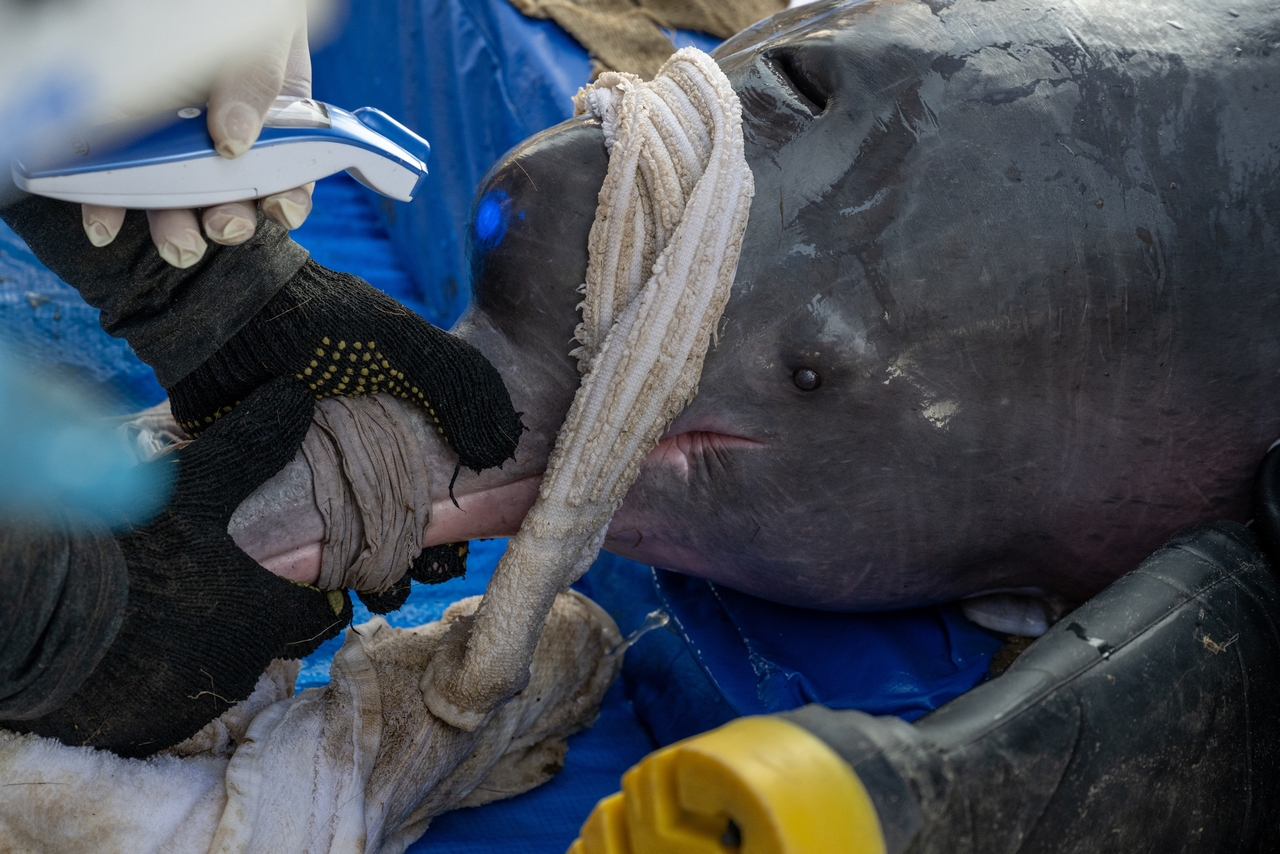
Jason Gulley for HuffPost
That female was one of just two dolphins that Marmontel and her team managed to get their hands on. As severe drought conditions set in and quickly dried up waterways, the safest sites to capture dolphins became inaccessible. In late August, they called off the rest of their planned assessments.
Since then, Marmontel and her team have found themselves responding to a steady stream of dolphin fatalities. Though dolphin populations in Lake Tefé appear healthy overall, five carcasses have turned up since late August — each one sparking renewed fears that another die-off has begun.
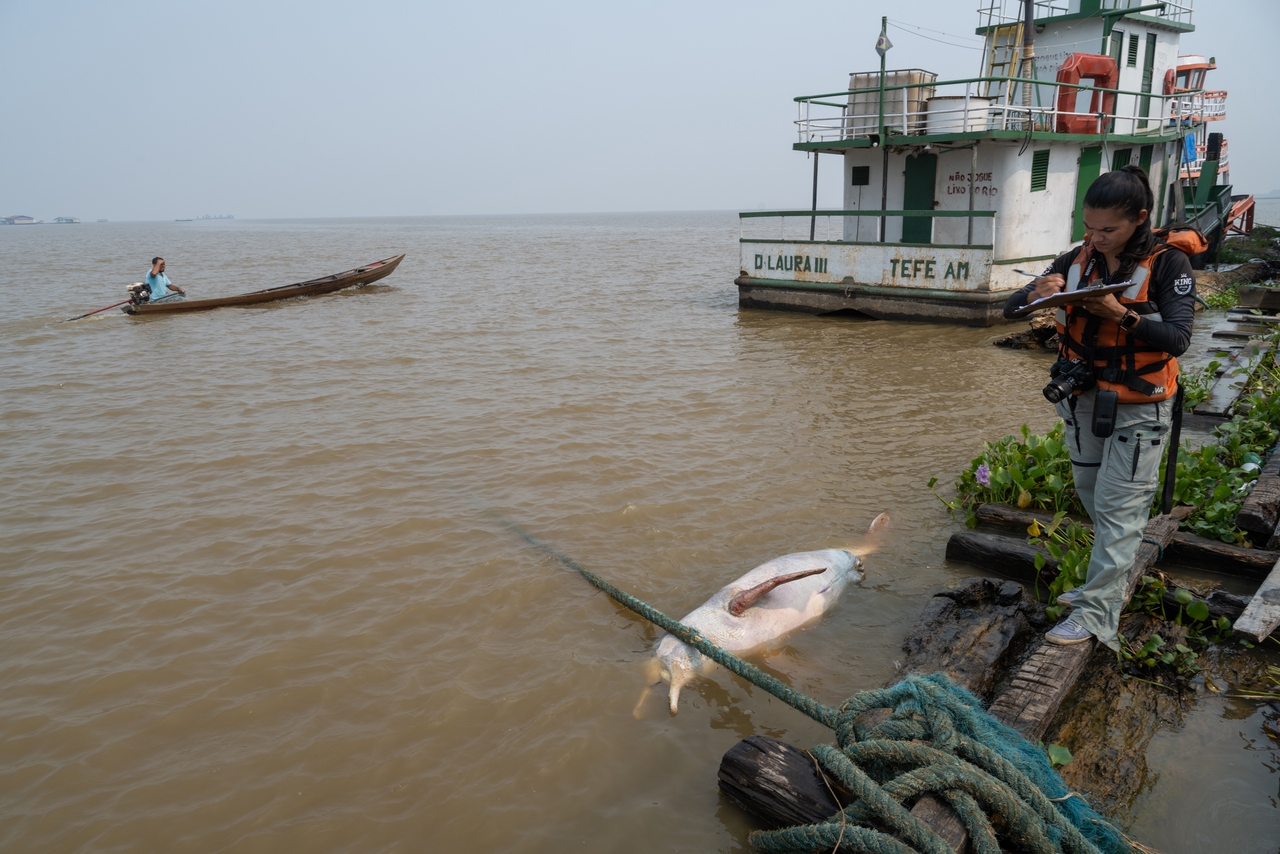
Jason Gulley for HuffPost
Daiana Guedes da Costa, a biologist at Mamirauá Institute, discovered the corpse of one pink river dolphin washed up near a home on Lake Tefé on Aug. 28. Two more were found on Sept. 7, another on Sept. 10 and another on Sept. 13. As biologists headed out by boat to recover one of the carcasses and determine the cause of death earlier this week, pods of pink river dolphins and tucuxi frolicked among schools of fish.
Advertisement
“The climate is changing, it has already changed, and we are seeing weird things in the Amazon,” Fleischmann said.
Scientists concluded that the 2023 drought in the Amazon was supercharged by fossil fuel-driven climate change, and climate experts warn that future events will be more frequent and extreme.
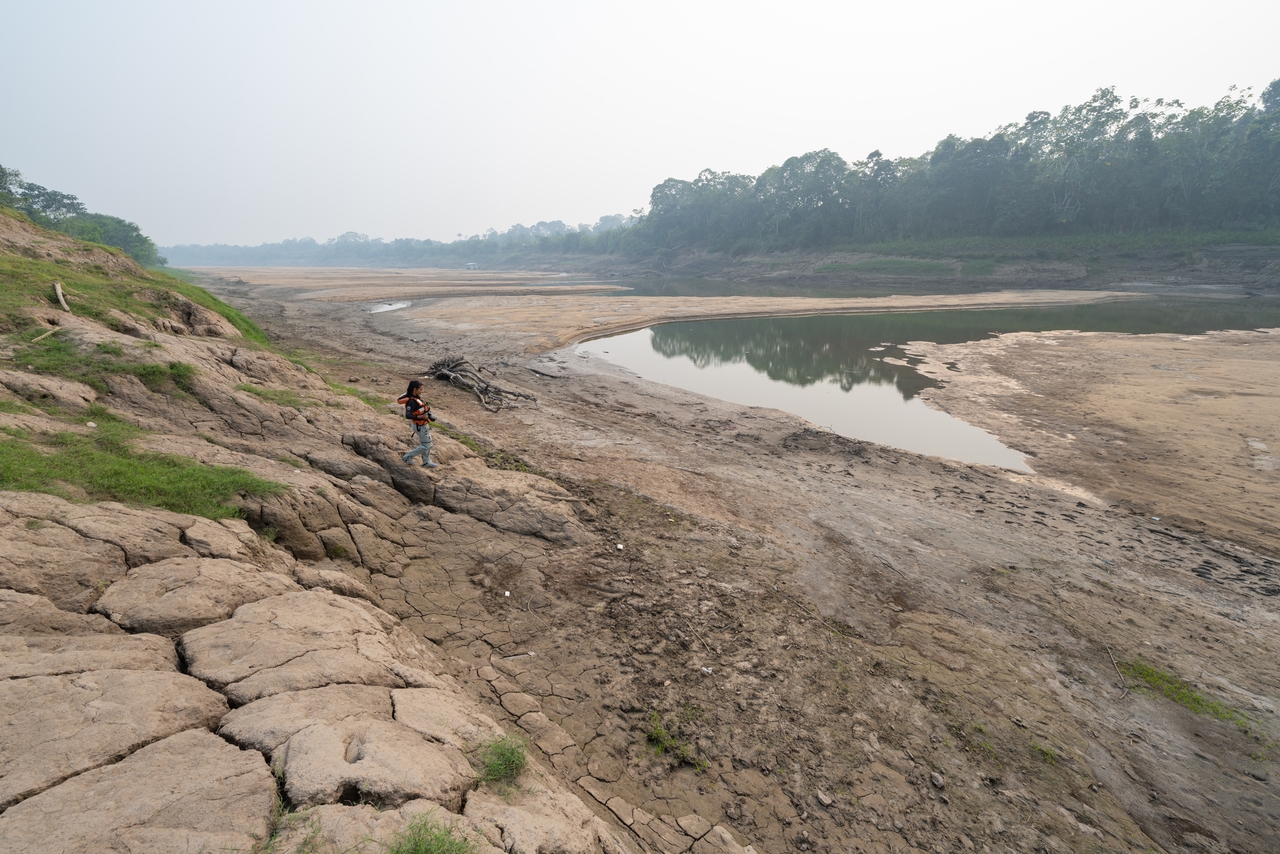
Jason Gulley for HuffPost
The Amazon and its approximately 1,100 tributaries are the lifeblood of the world’s largest rainforest and the 3 million species and more than 30 million people who live there. When rivers shrivel in times of intense drought, dead fish can pile up, water can become contaminated and hard to access, health problems can spike, and trade routes and entire communities can be cut off.
Fishermen in remote villages of the Brazilian Amazon claim they were once able to predict the onset of the dry and rainy seasons within a week or so. Today, the end of the dry season has become more of a guessing game. The longer the dry conditions stretch on, the less time there is for water levels to rebound when the rains return.
Advertisement
For dolphins, low water levels can cause cascading effects. As water gets shallower, it becomes darker and more turbid as the flow stirs up mud from the river bottom. Like a black T-shirt on a sunny summer day, the water absorbs incoming solar radiation and quickly heats up, sometimes by as much as several degrees per day.
Low water levels can also increase negative interactions with humans. Although extreme water temperature is believed to have been the primary culprit in the dolphin die-off in Tefé last year, many of the dead dolphins found near Coari showed signs of being slaughtered by fishermen. As waters recede, fishermen and dolphins, which prey on fish, are forced into smaller and smaller areas and end up competing for the same resources. Pink river dolphins are particularly bold and are known to damage fishing nets to get to an easy meal, according to Marmontel. Many of the dolphin carcasses recovered in Coari had machete and harpoon wounds. Others had fins cut off.
“We’ve documented interactions over the 30 years that I’ve been here, but it’s increasing,” Marmontel said. “It’s a problem that’s always happening. It’s known throughout the Amazon. The thing is, with this climatic situation, it’s going to be exacerbated even further.”
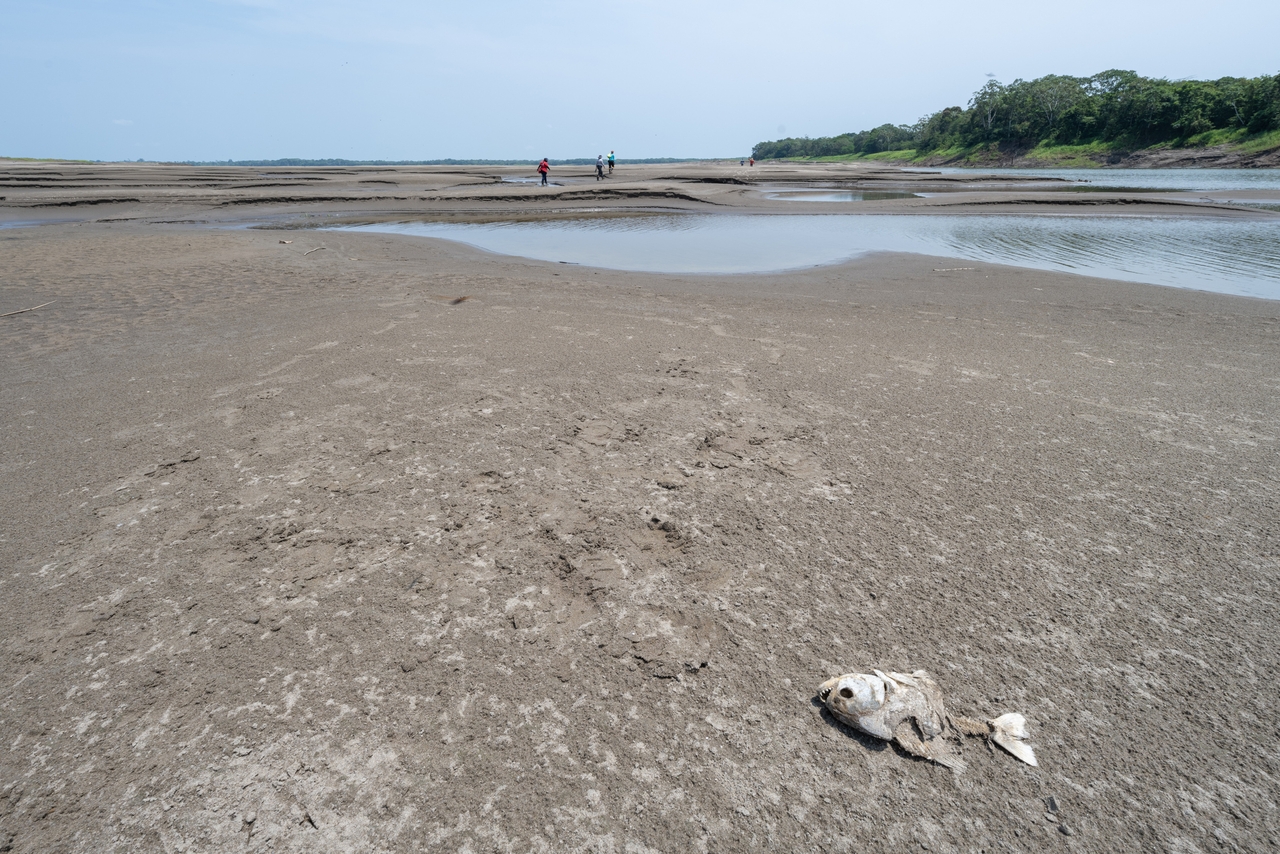
Jason Gulley for HuffPost
Three of the five dead dolphins Marmontel and her team recovered in recent weeks showed signs of human contact. One carcass had marks from a fishing net. Another had no head. And the third had no tail and deep lacerations along its dorsal fin, injuries that Marmontel said are consistent with being struck by a boat. It is the first time Marmontel has encountered an Amazon dolphin that was killed by a boat.
Advertisement
“It’s so dry, and everybody’s using that channel, the dolphins, too,” she said.
The Mamirauá Institute is doing all it can to prepare for what, right now, feels like an inevitable. They’ve been practicing simulated dolphin rescues and secured funds for a giant tank where they would be able to keep and rehabilitate up to three dolphins at a time. They have support from the Brazilian Army and several private organizations.
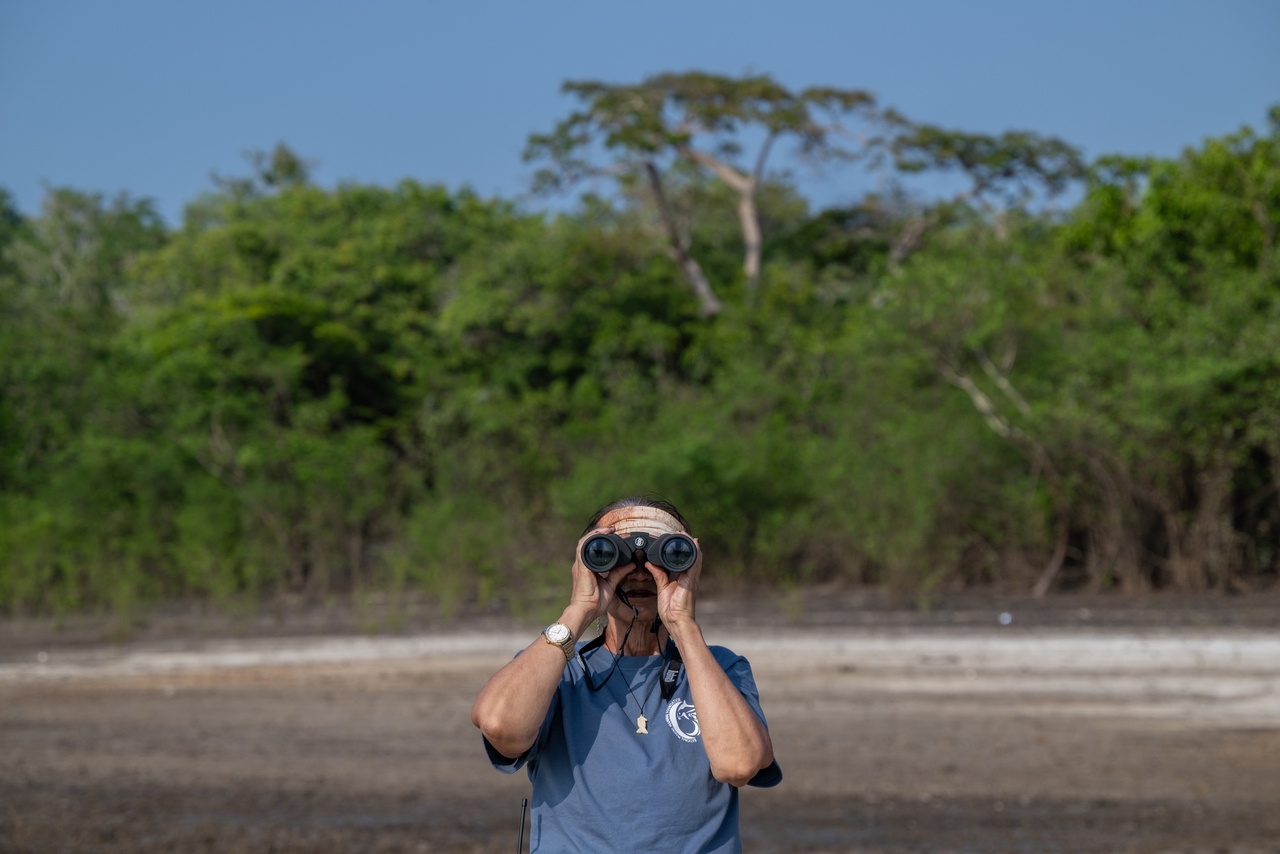
Jason Gulley for HuffPost
“We have better teams, better supplies and everything, but eventually it’s going to happen,” Marmontel said of a mass die-off. “And then, of course, it’s not just this year. It’s going to happen next year again. If not next year, the next. It’s going to be the new normal. And I don’t know how long these populations are going to survive because they are already endangered, both species.”
Studying dolphins, manatees and other aquatic mammals in the Amazon is Marmontel’s life’s work. For her, dolphins are a symbol of the Amazon region — unique, primitive and intelligent species that adapted perfectly to this environment over millions of years. But, most important, they are sentinel species that provide humans warning of dangers to the larger environment and human health.
“That became very clear last year because they were the first that were hit,” Marmontel said. “I keep saying that dolphins are us in the water, living all the time in the water. The Amazonian people depend completely on the water, for fun, for water, for transportation, for anything.”
Advertisement
“Whatever happens to [the dolphins], it’s going to happen to us,” she added. “Maybe a little later, but it is.”
Support Free Journalism
Already contributed? Log in to hide these messages.

Comments are closed.